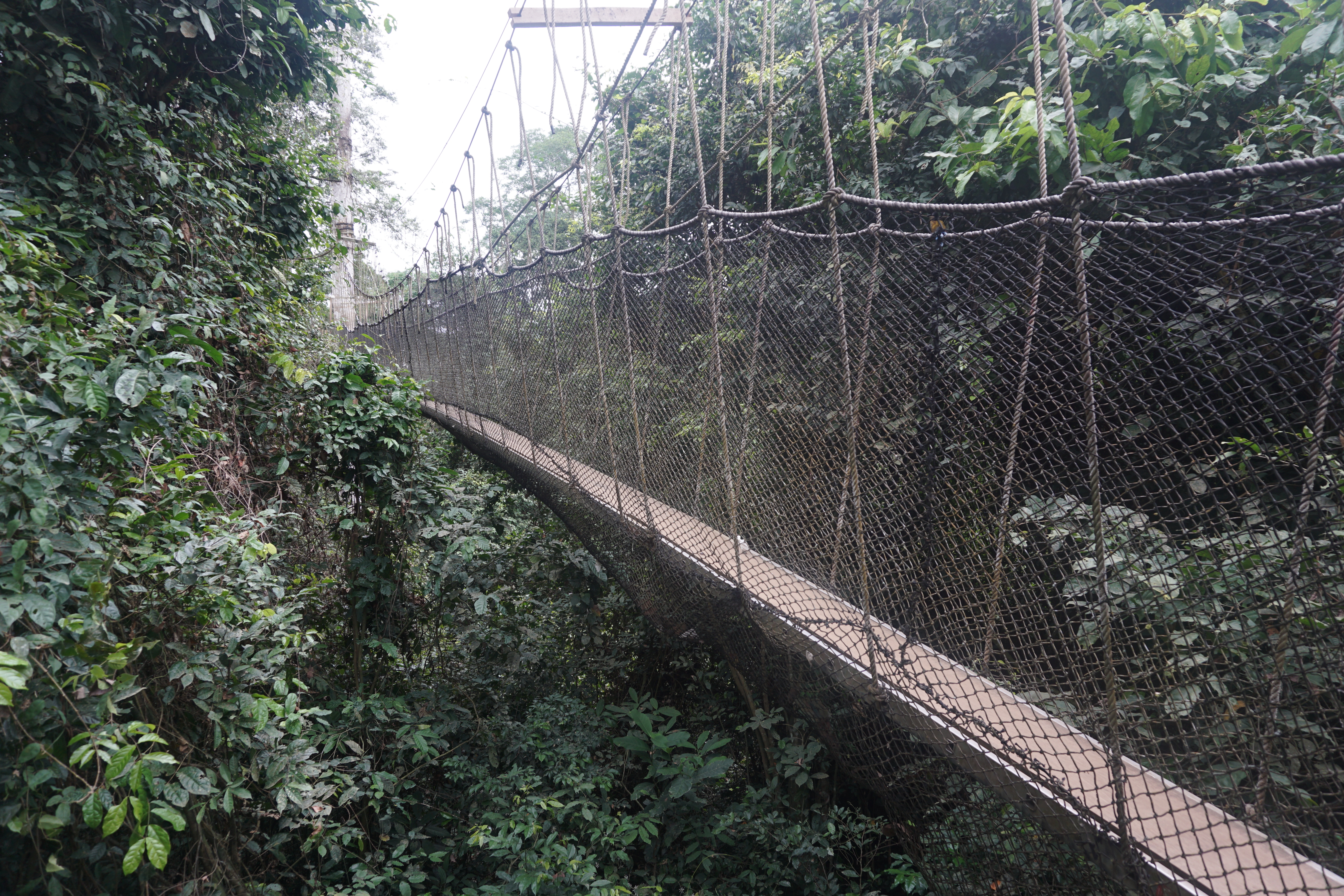My final vacation day in Ghana was to be an exciting one! A thrilling walk on the rainforest canopy would await me. When I awoke, I started the day with a quick breakfast at the hotel restaurant within my Elmina Beach Resort(Elmina Beach Resort) accommodations. An oatmeal, cooked beans, and stir fry veggies comprised my satisfying morning meal.
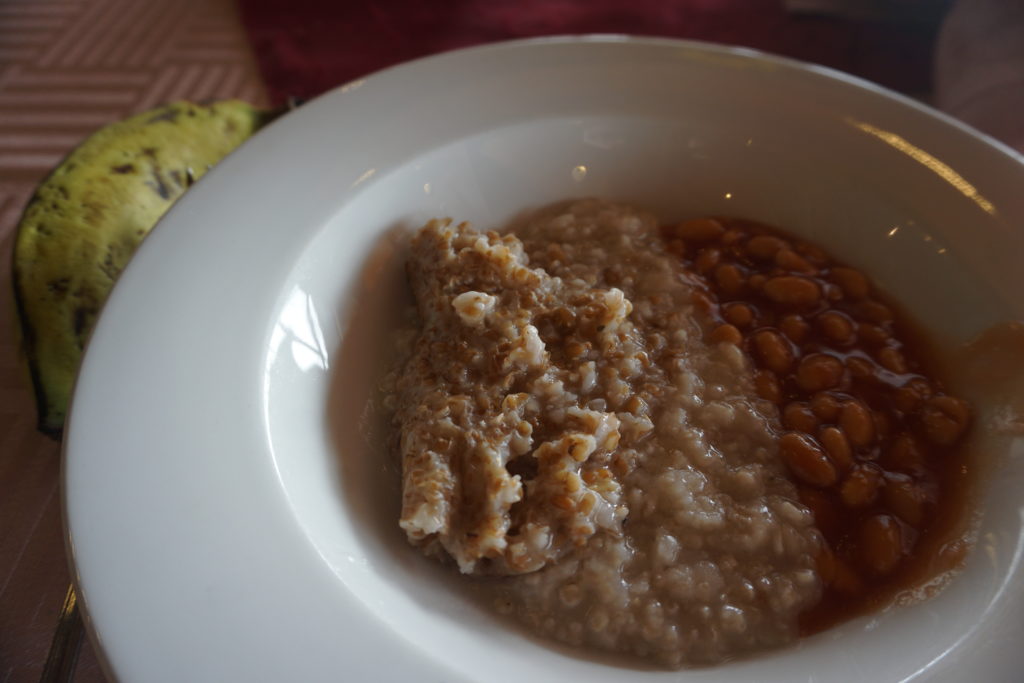
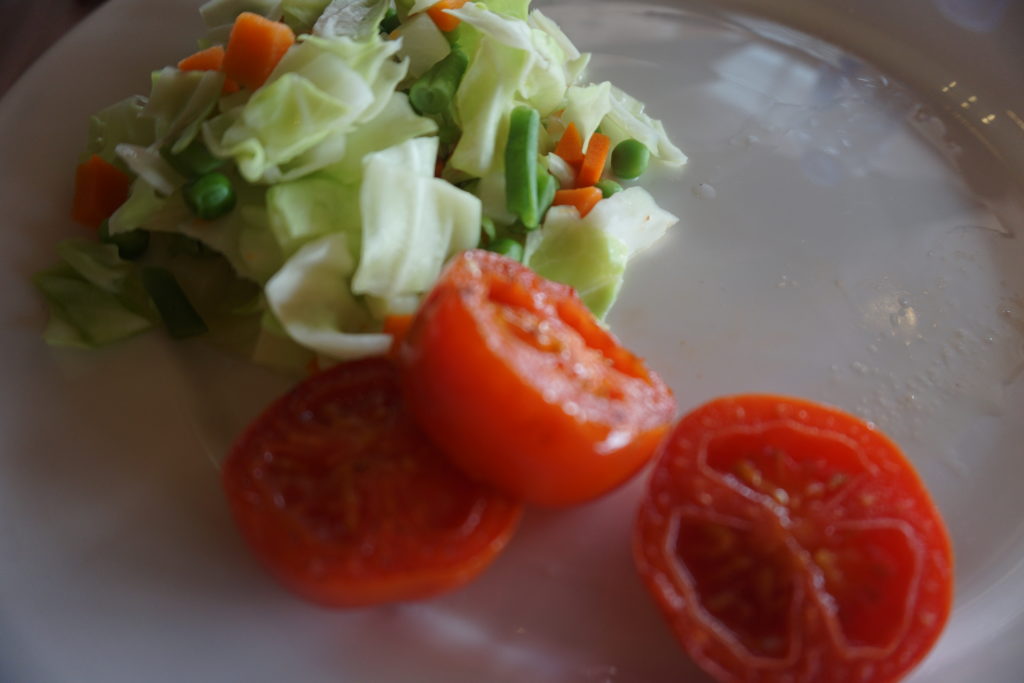
Before leaving my charming accommodations, I decided to go for a stroll to admire the oceanside views seen from my window. Elmina Castle could be seen in the distance.

I stood on the rocky shore, enthralled with the vast sea before me. I was wearing my custom-made kente cloth dress with Ghanaian symbols woven into the pattern.
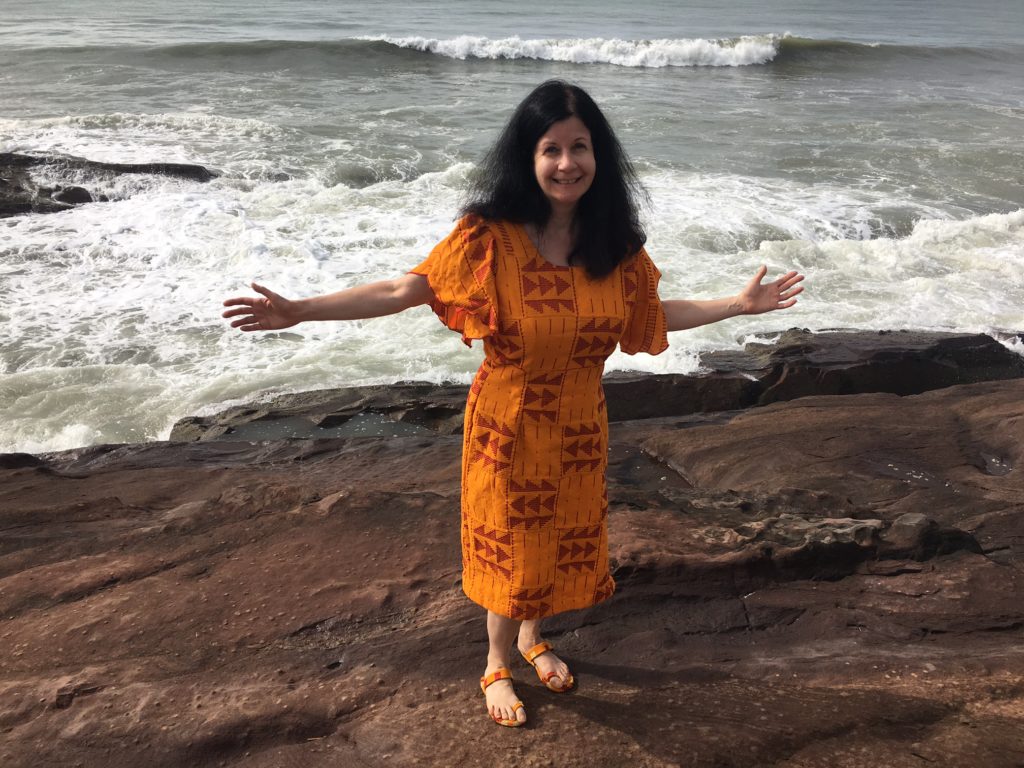
Further to the right side of the property, palm trees stood tall on the grassy beachfront. I highly recommend this oceanside resort for a scenic and comfortable stay in the Cape Coast region.
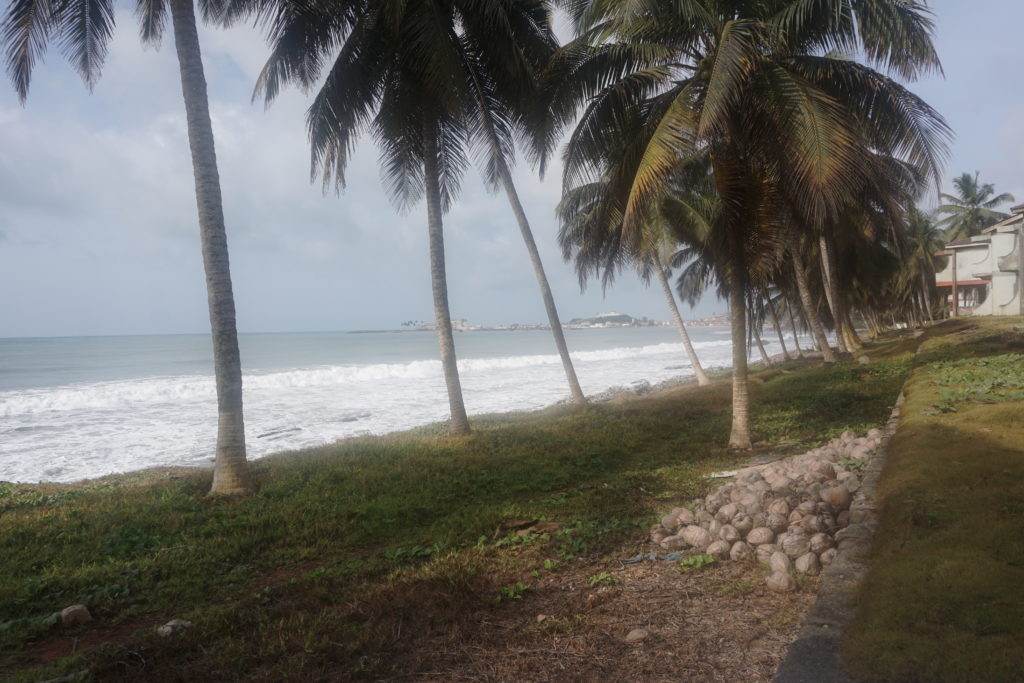
My tour guide arrived in the lobby and informed me that our drive to Kakum National Park would commence in a few minutes. I was excited that we would soon be exploring this lush paradise.
Along our route, I took notice of the many poor villages we encountered through our van windows.
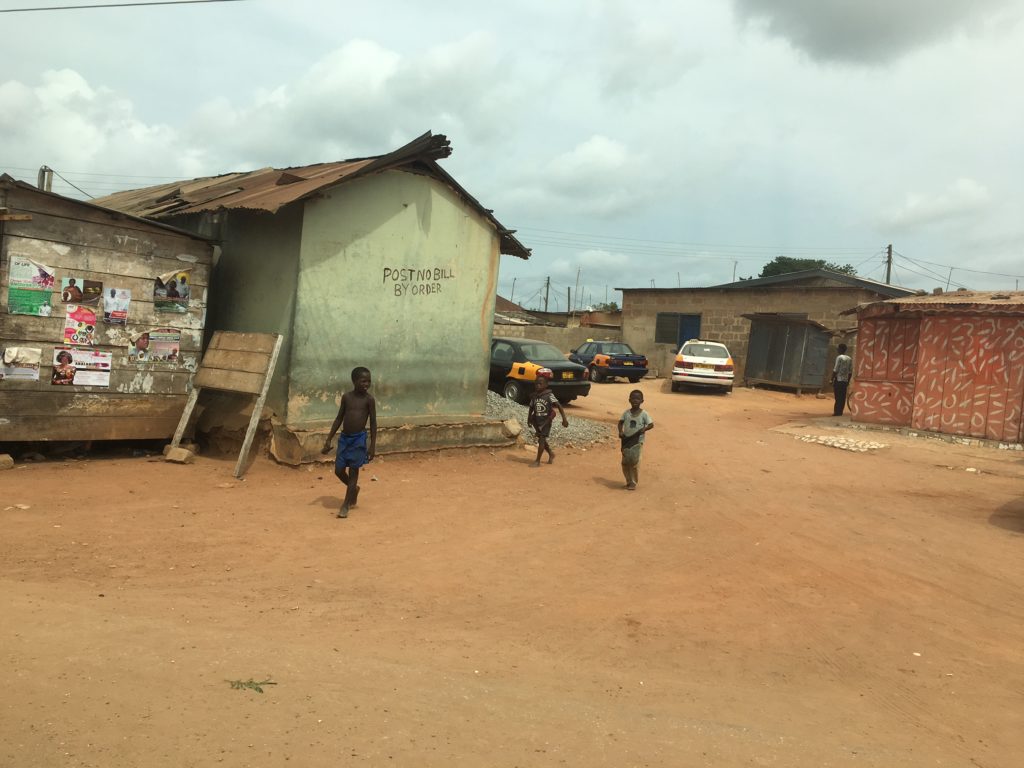
Next to a small market, women had been hanging their clothes to dry on outdoor clothing lines.
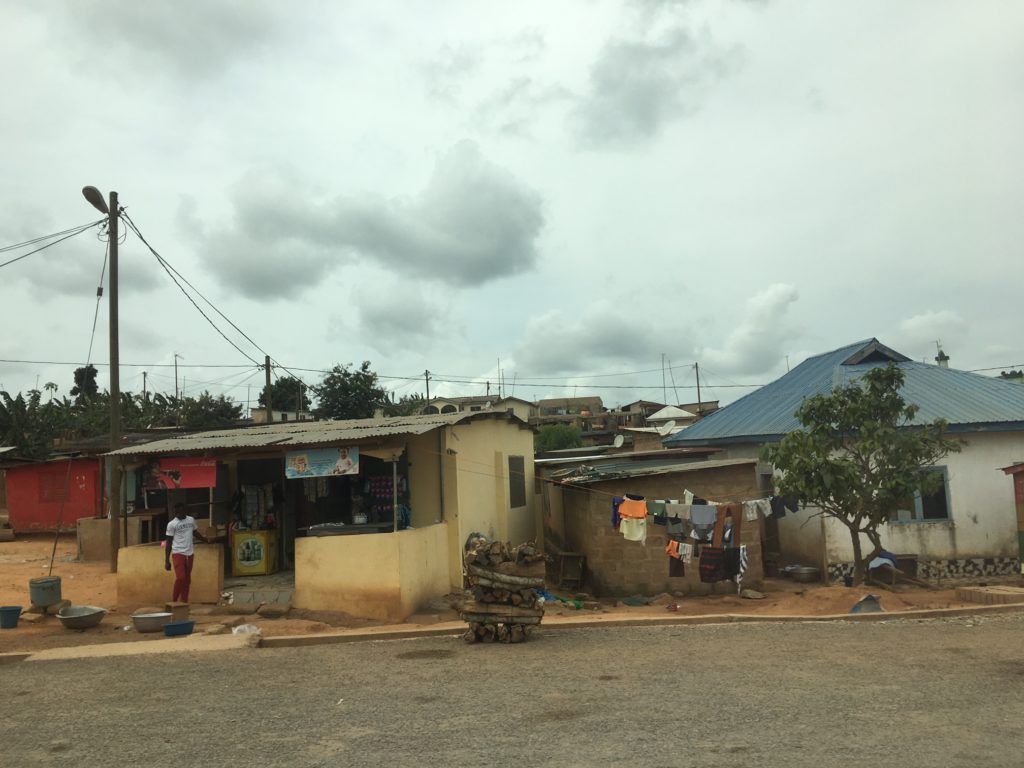
Locals were going about their day carrying laundry, grocery shopping, working, and greeting friends.

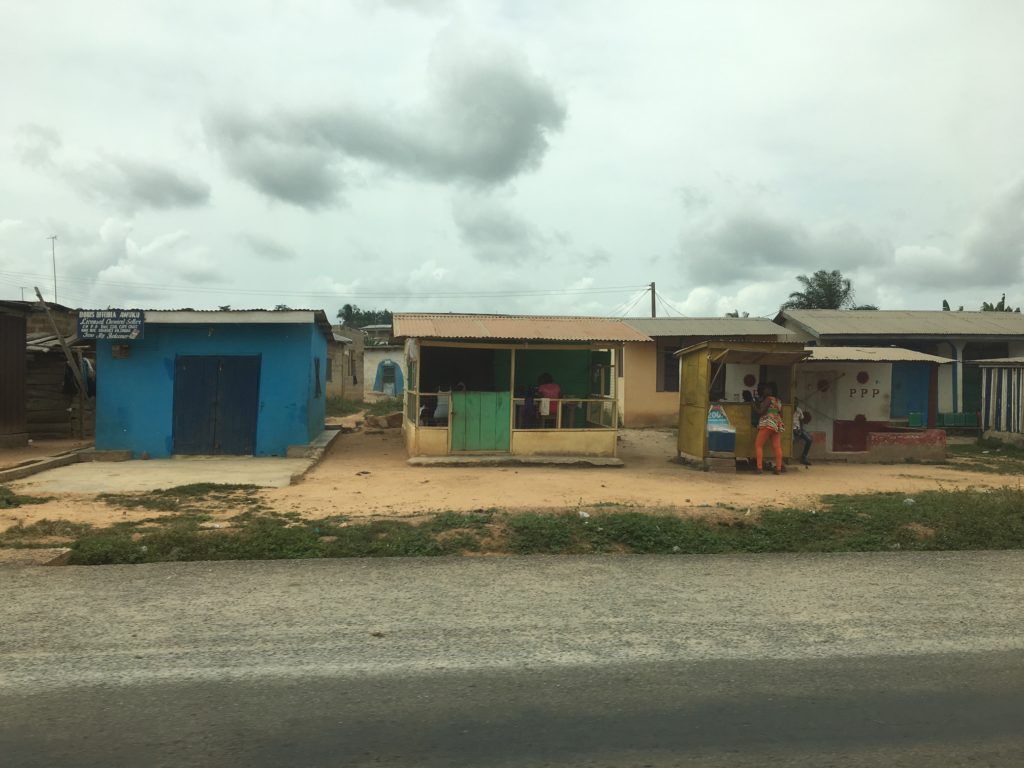
Banana trees are plentiful in this region.
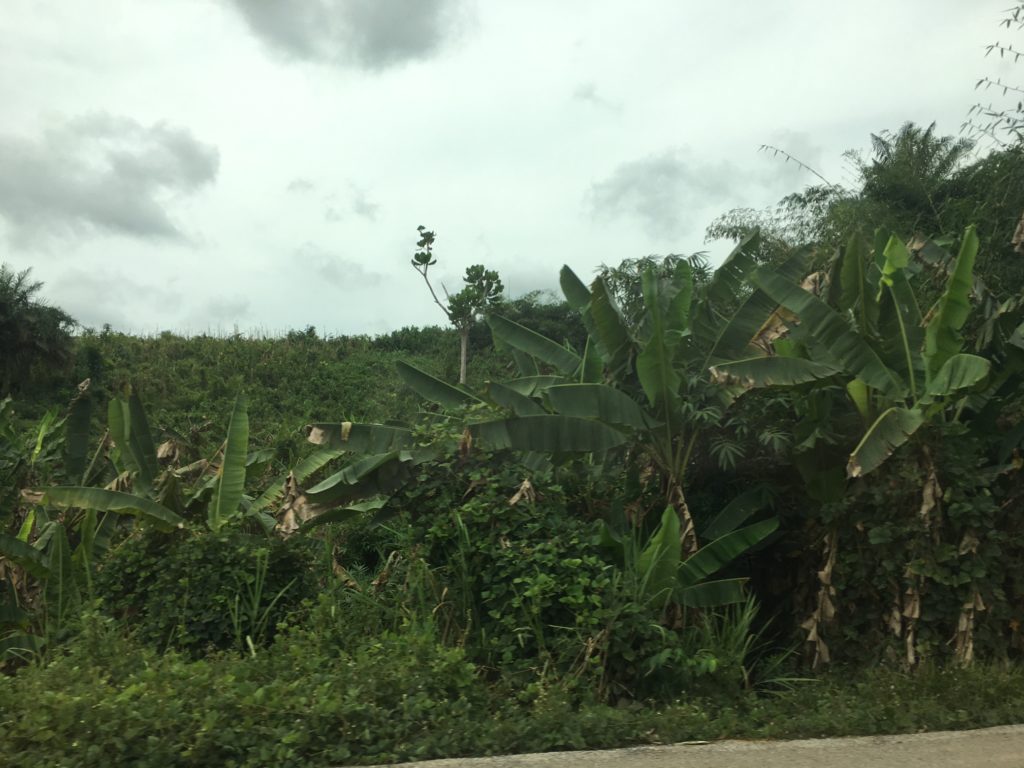
An outdoor pump supplies water for the local residents.
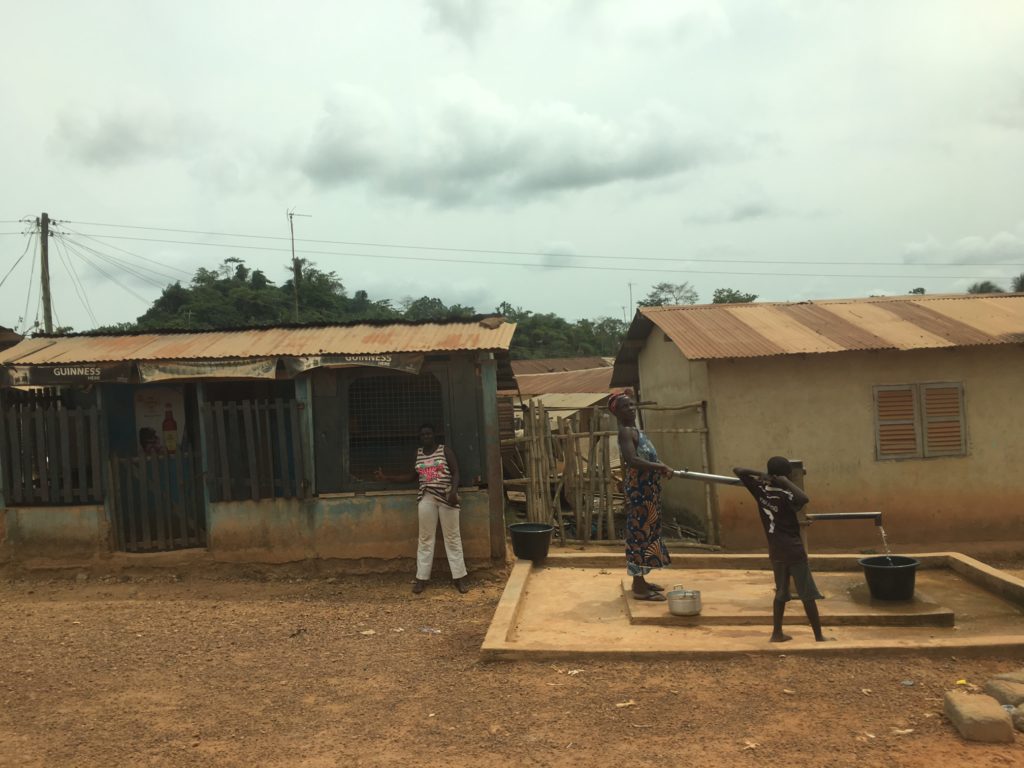
Some of the families reside in colorful houses, while others live in unpainted wooden shacks.
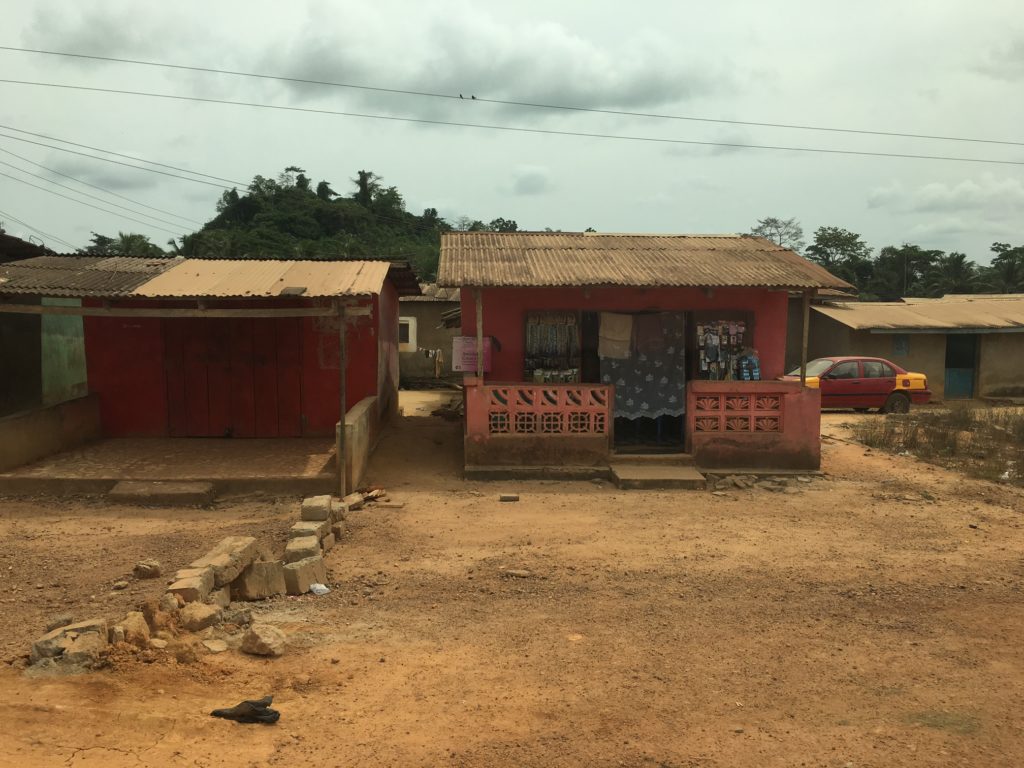
What a sharp contrast to see impoverished villages surrounded by scenic views of palm trees and other flora and fauna. Palm trees and banana trees are everywhere.
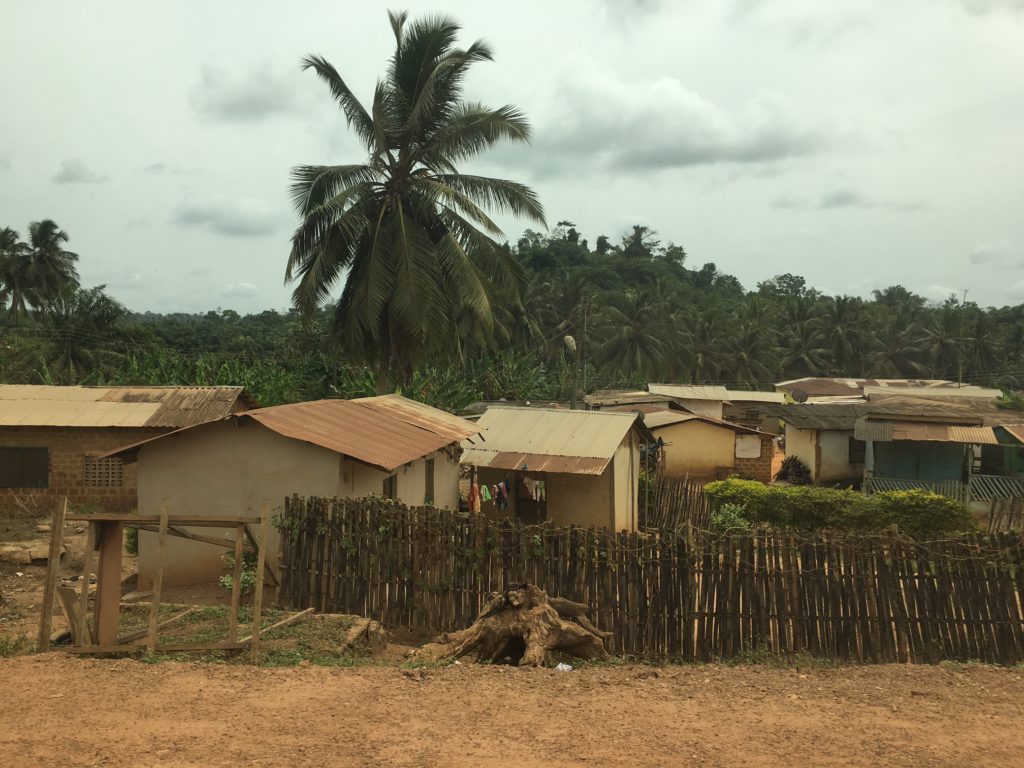
We arrived at Kakum National Park during the mid-morning hours. Kakum is a National Park located in central Ghana, approximately 15 kilometers north of Cape Coast. Recognized for its 266 bird varieties, the Park is also home to other species including African elephants and monkeys. Birds are typically encountered during the early daybreak hours. Thus we would not encounter any during my visit. Flora and fauna abound in this 360 square kilometers of lush rainforest tapestry. Tourists love to visit Kakum to experience its canopy walk. Seven canopy bridges would take us on a treetop journey throughout the Park. Each of the narrow wooden bridges are separated by a wooden platform.

My private guide took a break for a well-deserved rest, while the Park’s own guide led a group of us deep into the forest. Once we reached the first wooden platform, it was time to muster up some courage to take those initial steps onto the first bridge.
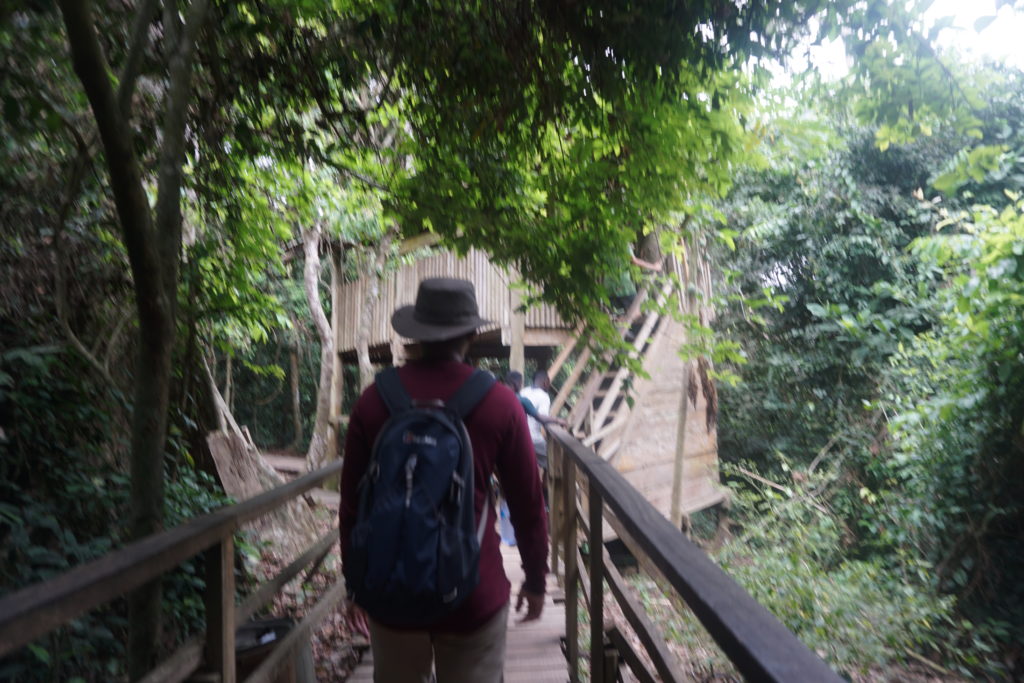
Thankfully, I was pretty brave and kept my balance while posing for a photo shortly after walking onto the bridge. Though the wooden plank bridge was narrow and high above the trees, its rope sides provided security and something to hold onto, as I took each advancing step. Eventually my confidence level grew and I was able to let go of the ropes, while stopping to take photos on the bridges.
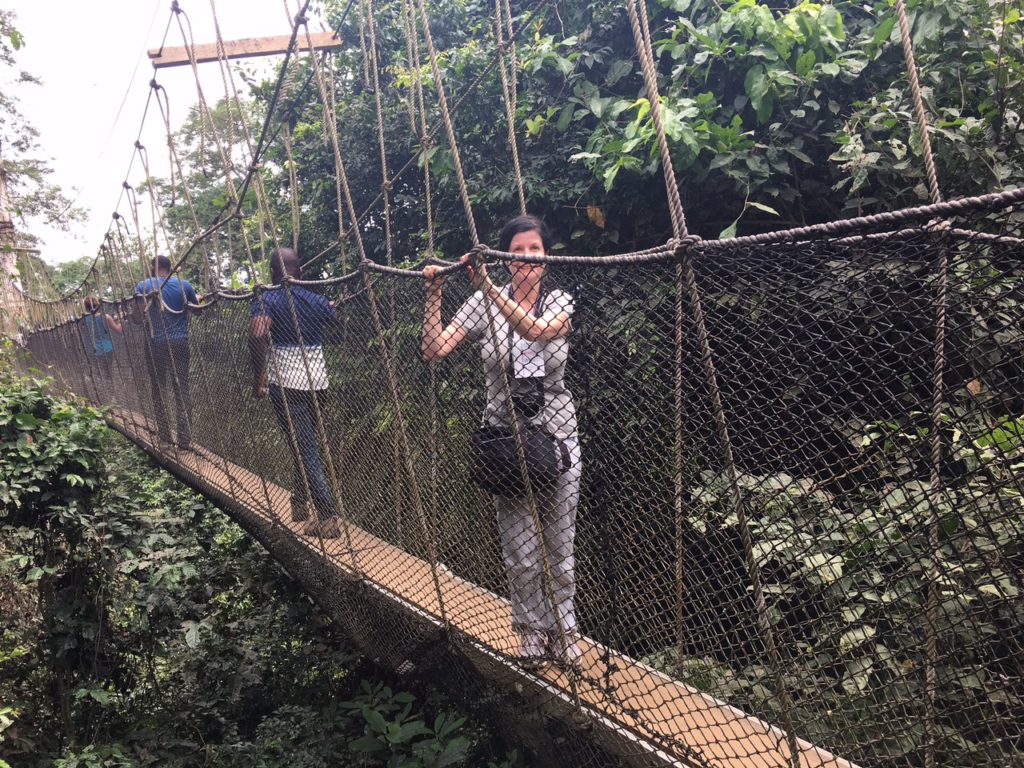
My group marched forward as we went from bridge to bridge, stopping to take photos and to admire the forest views from each of the platforms.
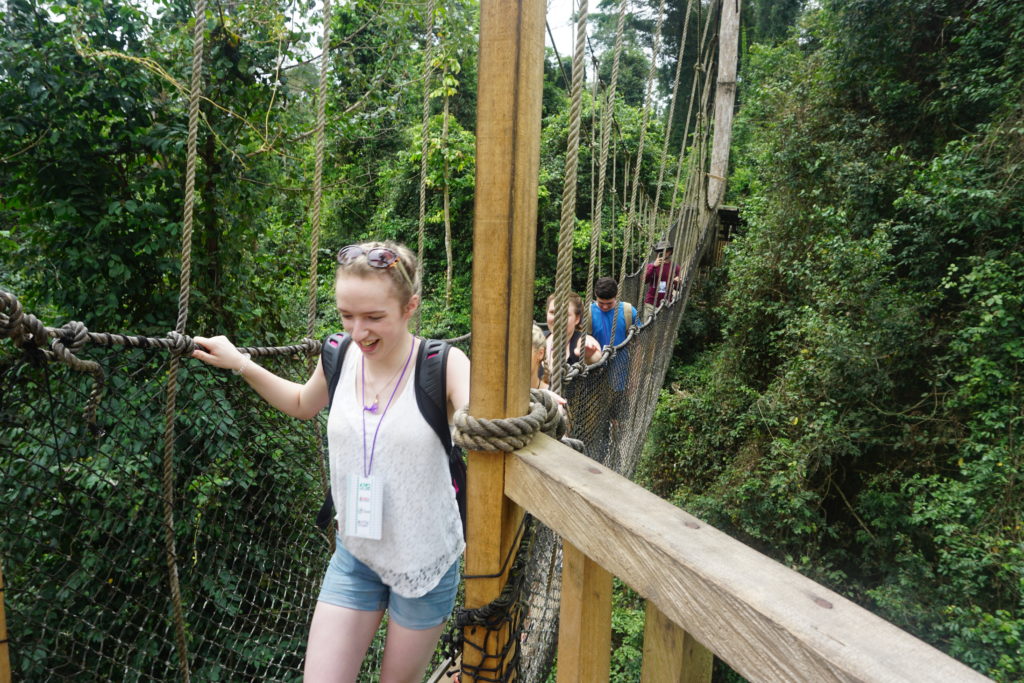

One of the seven bridges is a bit lengthier than the others, but it did not frighten me. I was able to conquer it without issue. In fact, the walk was exhilarating!
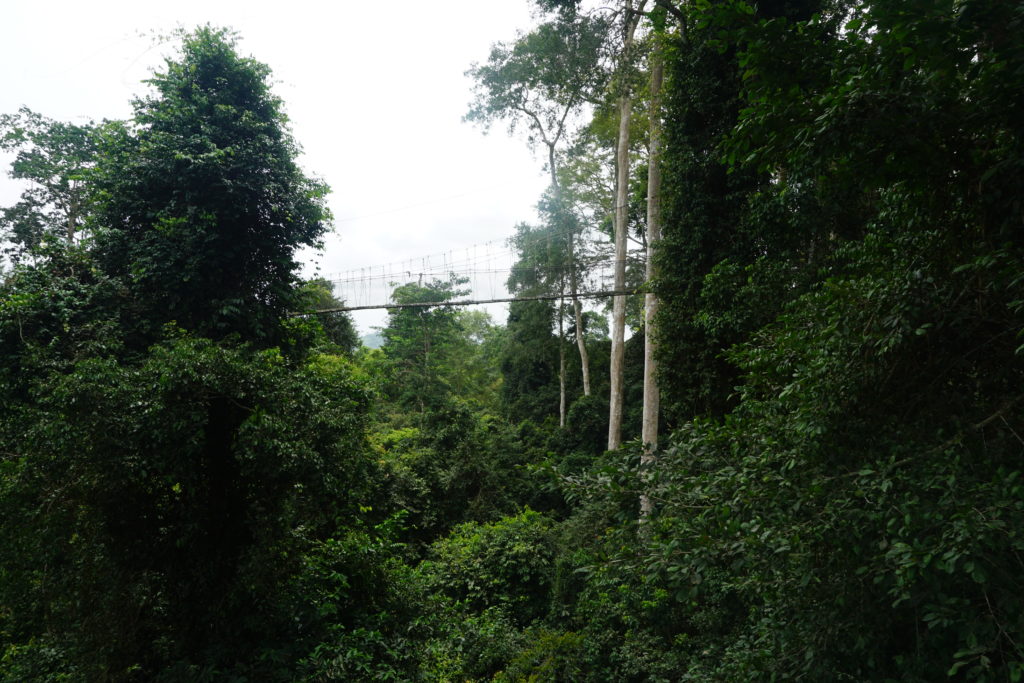
At one point, I thought it would be pretty cool to take a look down into the forest from the canopy bridge. We were indeed soaring above the treetops at a high elevation.

In no time at all, we had made it to the second to last of the bridges.
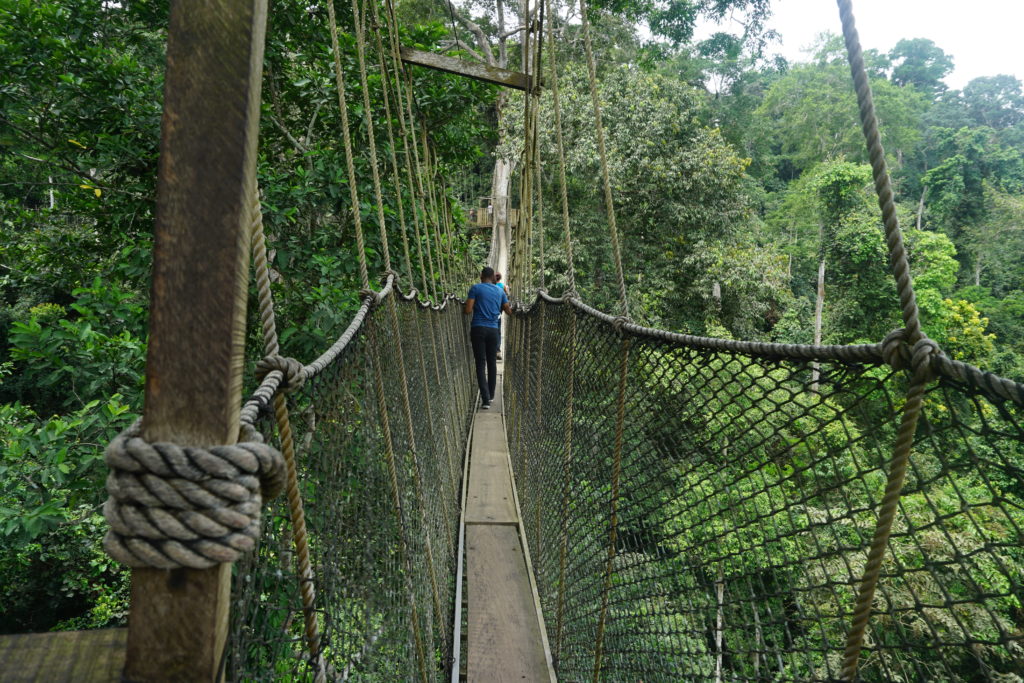
I had no fear at this point. The guide took my photo while I bravely let go of the ropes and swung my arms up in the air. “Look.. no hands!”, I declared.

With the 6th platform behind me, I proceeded onto the 7th and final canopy bridge.
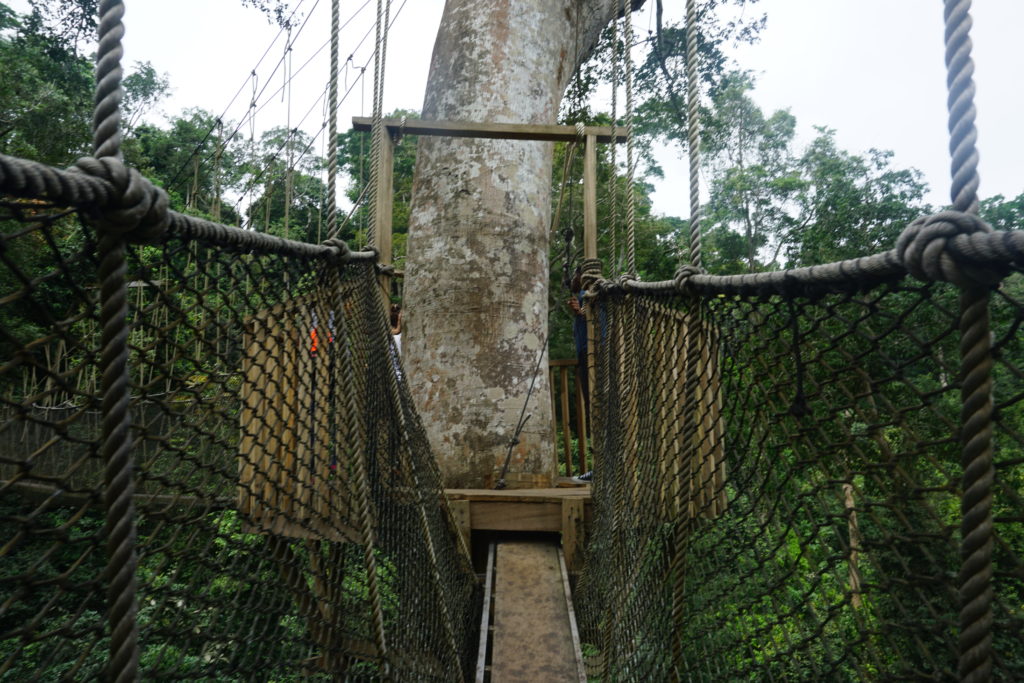
My entire tour group successfully crossed the final bridge without incident or hesitation. Though we did not encounter any birds or wildlife while above the treetops, the breath-taking forest views and thrilling canopy walk made this a glorious escapade.
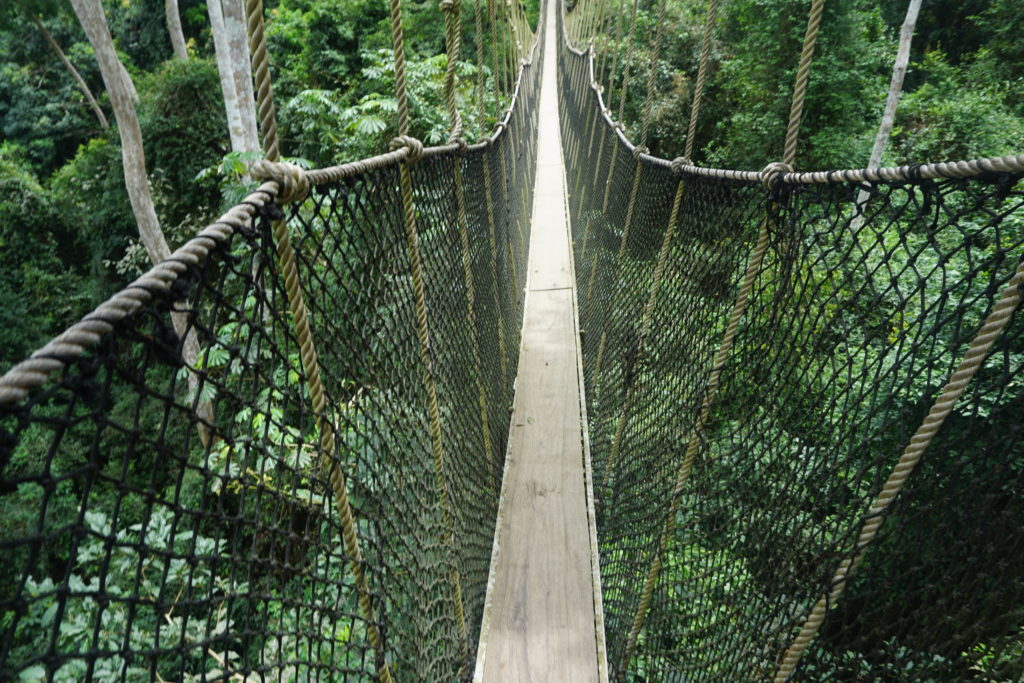
As we descended from the final platform, we came across a couple of beautiful butterflies nestled among the plants and trees in the forest.


Staff from the Park were harvesting coconuts near the edge of the woods.

I noticed several colorful iguanas and squirrels on the grounds between the rainforest walkway and the visitor’s center.
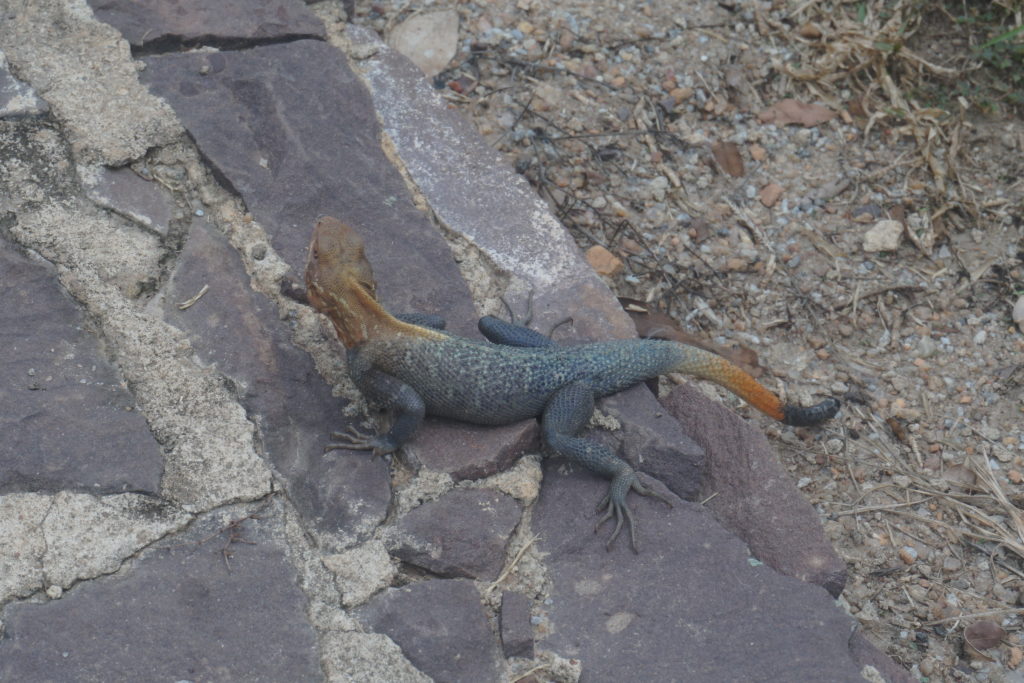

As we were leaving, a couple of larger birds were flying among the treetops near Kakum’s parking lot.

I also appreciated the gorgeous orange flowers in bloom.

For lunch, we headed to Emperor ITAL Restaurant (Emperor ITAL Restaurant) in Cape Coast. The small “chop shop” offers all-vegetarian and vegan meals. They do provide bench seating at lengthy picnic tables.
I really enjoyed the delicious Ghanaian dish of palm nut soup with a side of fufu(pounded yams or cassava).

Fort Amsterdam was the next stop on my day’s itinerary. The fort is located in Kormantin, in the Central region of Ghana. Built by the English between 1638 and 1645, it was captured by the Dutch in 1665. The fort was subsequently traded with the British in 1868. The village of Abandze has emerged around it. This small fort is thought to be the first slave prison in Ghana.
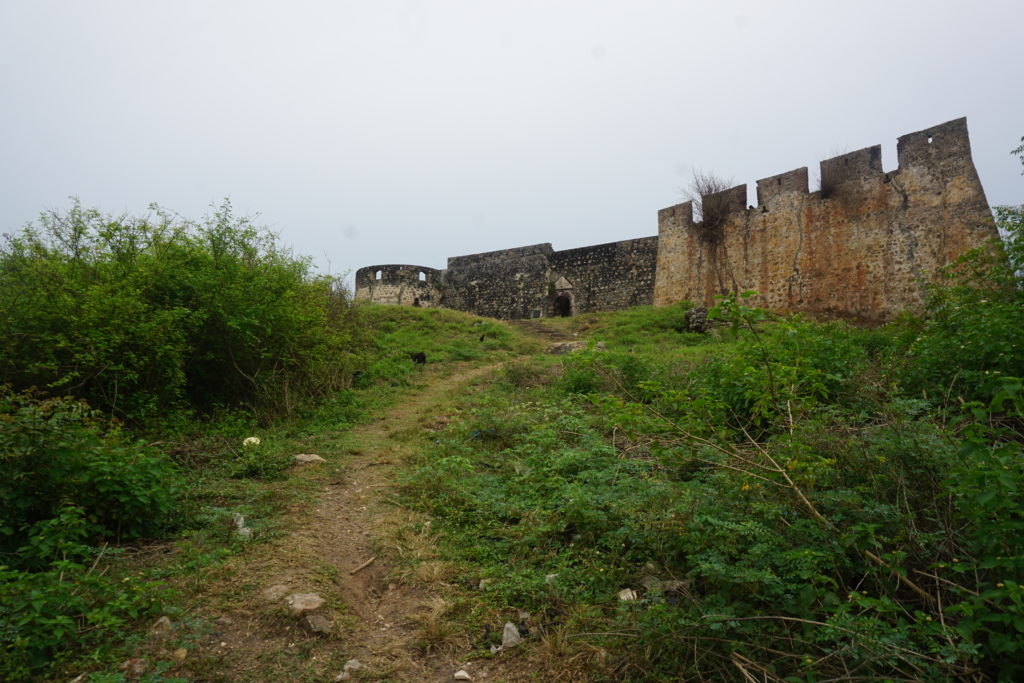
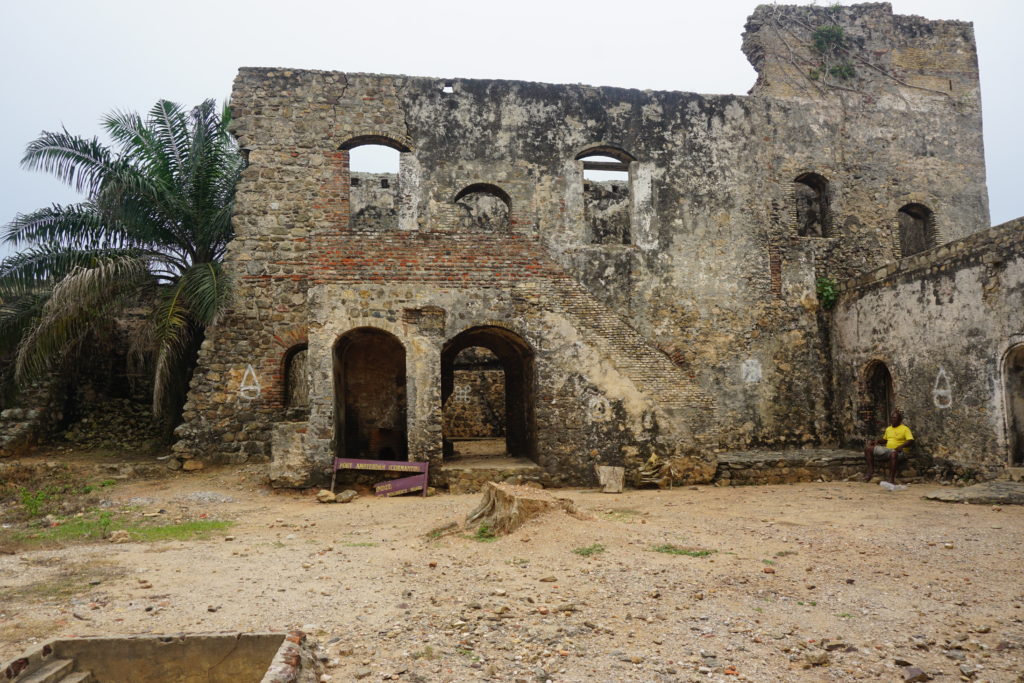
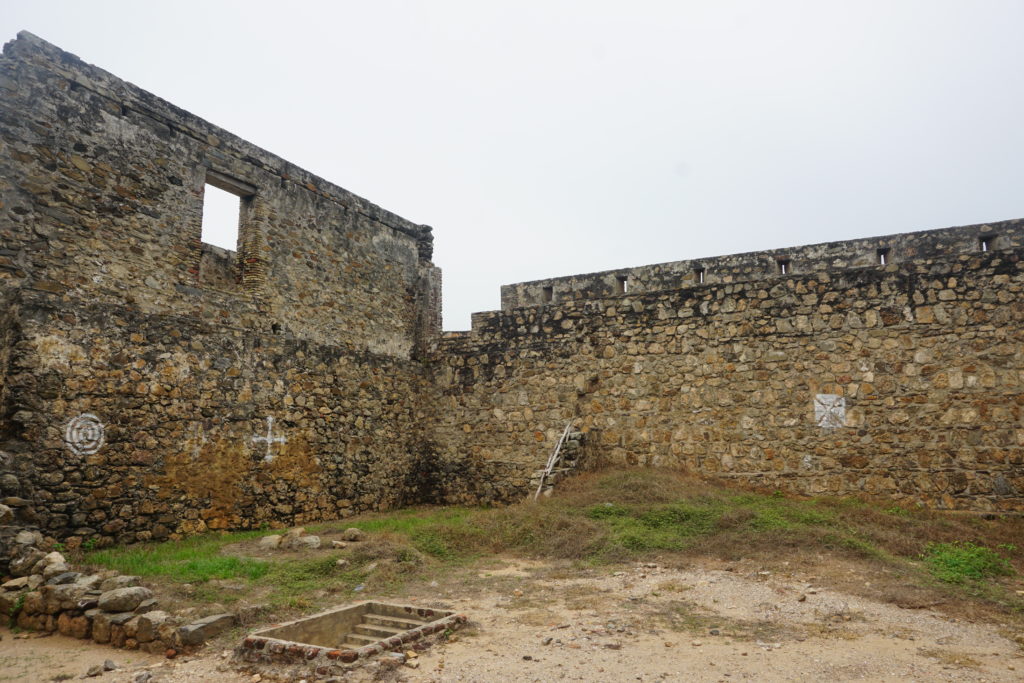

A local guide explained its history and showed me the interiors of the fort’s two slave holding rooms.


Abandze village is the ancestral home of the legendary jazz musician Louis Armstrong. In close proximity to the fort, village homes still stand.
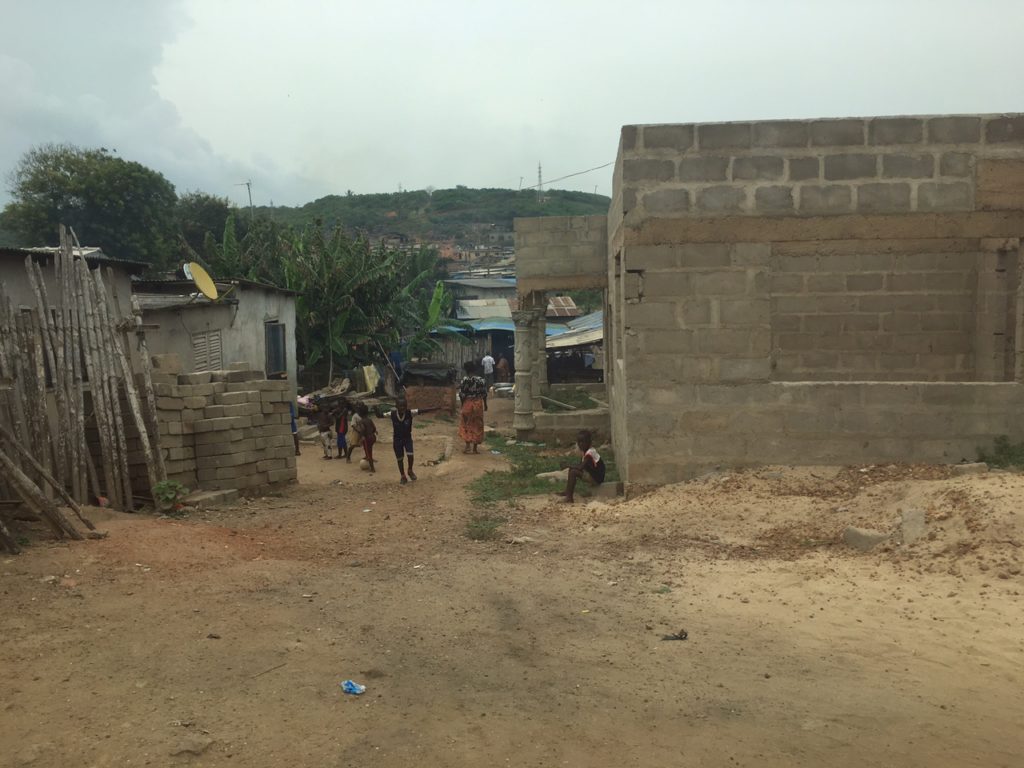


The final stop on my itinerary was the town of Mankessim, also located in the Central Region. This is the home of the Fante tribe people. Three warriors named Obrumankoma, Odapagyan and Oson helped the Fante migration from Takyiman in the Brong Ahafo region to the Central Region. They were known as the whale, the eagle, and the elephant respectively. The three men are immortalized with statues located at the Mankessim roundabout in the town.
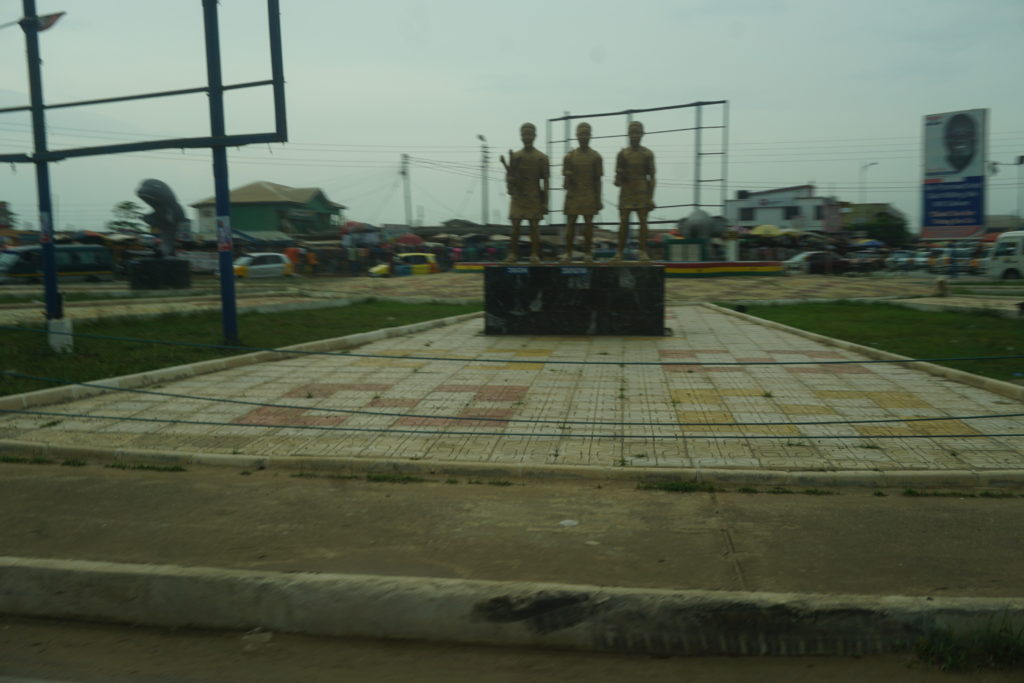
Likewise, their symbolic animals are honored with statues of their own. I caught a glimpse of each one, while snapping a photo of the Eagle.

A fascinating Posuban Shrine in Mankessim houses ammunition, drums, and other equipment that is associated with the asafo company. Asafos are traditional warriors who form “companies”(Fante armies) to defend the state. Each figure has significance in the history of the Fante people. Statues of Obrumankoma, Odapagyan and Oson represent the strength of undefeatable Mankessim. Above, the country’s coat of arms stands a monster with four heads, wings, and a bow. The local proverb associated with it, is translated as “will you fly or vanish when faced with us”?

My day tour had completed and we were on the way to the airport in Accra, for my return flight home. Delta Airlines provide a wonderful vegan dinner for me. I dined on spinach, rice, and sauteed mushrooms with olives. A vegetable salad and a mixed fruit plate were the sides.

While awaiting my connecting flight in Paris, I purchased some chocolate “tea cookies” and a vanilla soy yogurt with coconut topping, at “Exti”(Exkti) in the Charles De Galle Airport.

Air France provided a vegan brunch onboard. For the first time during my travels, a wonderful vegan option was available for breakfast or brunch. My delicious meal consisted of mini French toasts with syrup, vanilla soy pudding, hash brown potatoes, fruit salad, and baguette bread with vegan butter.

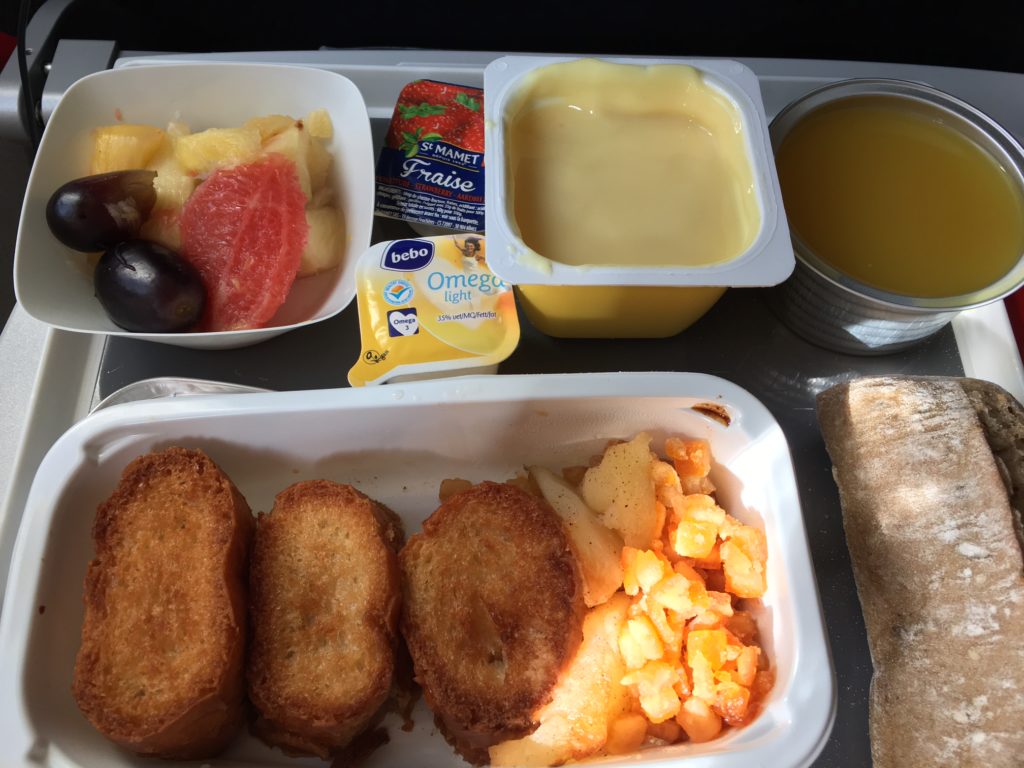
Before we landed in the United States, I was offered a tasty vegan granola bar and applesauce snack.
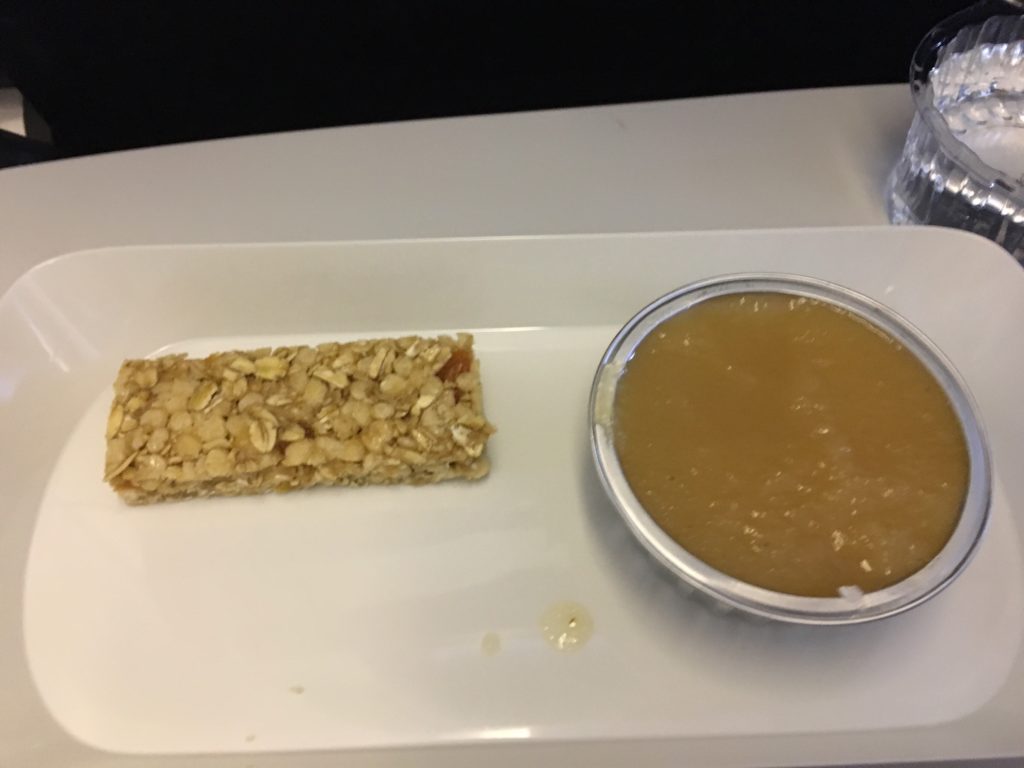
I enjoyed my weeklong vacation in Ghana. From the poignant history of the Cape Coast region slave castles to the Ashanti region craft villages and royal history, from the sites in Accra related to the country’s independence to the canopy walk adventure that awaited me at Kakum National Park, from my traditional drumming & dance lesson to the amazing traditional vegan meals; my Ghanaian holiday was truly an amazing experience.
